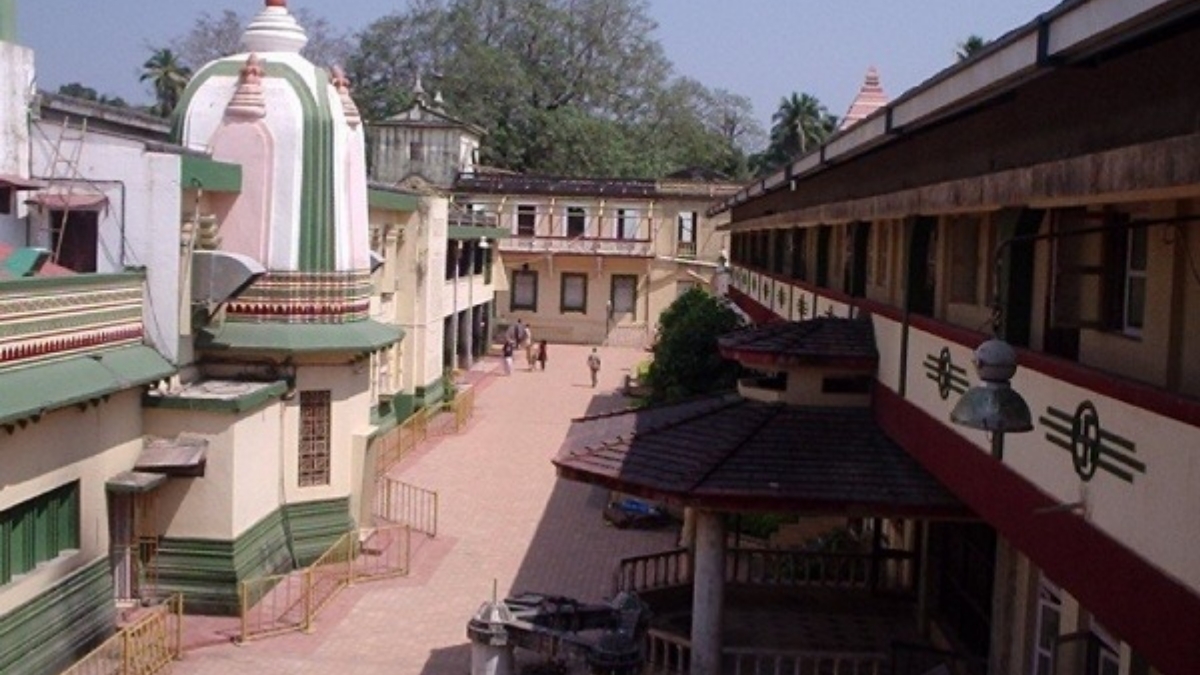At a distance of 54 km from Panjim Kadamba Bus Stand, 49 km from Vasco Da Gama Railway Station and 19 km from Margao Railway Station, Shri Damodar Temple is situated in South Goa.
The Shri Damodar Temple is one of the most beautiful and famous architectural constructions in Goa. It stands on the bank of Kushawati River near the Zambaulim Village on the border of Quepem Taluka. Hindus believe that the Kushawati River has healing powers which help to get rid of various body ailments.
Damodar Temple is a Hindu Temple dedicated to Lord Shiva located on the banks of Kushawati River near the Zambaulim Village in southern Goa, India. Shri Damodar is the Grama Devata or the village god of the entire village of Loliem. The Temple follows the rules set by The Gokarna Partagali Jeevottam Math. The Damodar temple, belongs to GSB community (Gowda Saraswath Brahmins).
History of Damodar Temple Zambaulim
The temple was established by the Prabhudesais, who arrived in the hamlet of Loliem in 1500 A.D. History says that the Prabhudesais once ruled the kingdom of Kudal, a village located in the present day Maharashtra. The deity was originally based in a temple where the Holy Spirit Church in Margao now stands and was moved to escape from the Portuguese inquisition in 1567 when the temple was destroyed, and the church was built on its site. Both Hindus as well as the Catholics alike revere it. And it was originally founded in Mathagram, later known as Madgaon.
The Mahajans from Madgaon shifted the local deities, Ramnath, Damodar, Laxmi-Narayan, Chamundeshwari, Mahakali, Mahesh, etc. to Zambaulim. The Desais of Rivona helped the Mahajans and gave them land for the construction of temples as well as Vatan which is being paid even today. And records about the date of construction of the original Damodar temple at Zambaulim and the dates of posterior extensions or reconstructions of the temples therein up to 1885, are not, so far, available. In the year 1910, the small temple was replaced by a huge one, which stands today in the present place.
The Damodar Temple Zambaulim
Presiding Deity is Shri Damodar. Sanctum houses the presiding deity along with Shri Kshetri and Shri Raudri. There is a huge Sabha Mandap outside the sanctum. Special sangamarvari chowk has been created for pradakshina around the sanctum. Deepa Sthamba (Lamp Tower) can be found facing the sanctum. There is also an idol of Lakshmi Narayana inside the sanctum. There are shrines for Goddess Chamundeshwari and Shiva on either side of the sanctum. The enchanting idol of Lord Shiva was consecrated at the present site after the Portuguese demolished the original temple in 1567.
There is a Tulsi Vrindavan in the Temple premises. There is a Shrine for Lord Venkatesh in the Temple premises. It was installed in the year 1910. A Saligrama is kept before the Lord Venkatesh. The walls and pillars of the temple have beautiful carvings as well as inscriptions from Bhagavat Gita. Some pillars depict scenes from the Mahabharata as well as paintings of the other Hindu Gods. The Mahajans of this temple are the Prabhudesais. Accommodation facilities are available in the temple complex for the community members.

Festivals at Damodar Temple Zambaulim
The temple celebrates festivals like Rathotsava, Diwali, Vanabhojan and Shigmo. The main festival celebrated in Shri Damodar Temple is called Shigmo. This is a Goa Hindu spring festival of colors, which lasts for one week only. During the festival the Panair takes place and the folkloric show within which all participants are exchanging gulal (powders of different colors) with each other and organize various feasts.
Timings: 5:30 AM – 9:45 PM.


